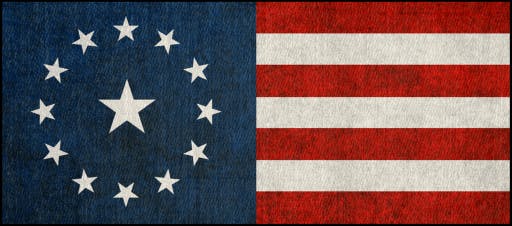Unmasking the UNITED STATES INC. The Corporate Takeover of American Liberty and financial freedom.
It's very important to understand that the term "enslavement" in regard to Americans takes on several forms. For example, the first and most important form of enslavement is the fact that in 1861, our republic of 1776 was hijacked, pushed aside, and replaced with a socialist democracy known as UNITED STATES INC. This is nothing more than a corrupt corporation that deals with commerce for personal gain, as they have no allegiance to "we the people." In alignment with the hijacking of our republic, they also subverted constitutional law and common law for maritime admiralty law, as they knew constitutional law and common law would hinder their agenda. Furthermore, they pushed our constitution aside by removing what they did not want and adding what they wanted so that they could press forward with their agenda.
In regard to freedom, of course, our military protects us from threats foreign and domestic, and we are very grateful for their service and sacrifices on our behalf. However, there are other threats to our freedom that have nothing to do with the military. I am referring to financial freedom that has been stripped away from us as a result of our republic being hijacked in 1861. For over 100 years, the de facto federal government, which is a socialist democracy known as UNITED STATES INC, has been enslaving the American people by using what is called a BIRTH CERTIFICATE, which is nothing but a government bond that is not only used as collateral but also used to create a corporation in our name known as a legal fiction. The corporation that was created in our name at the time of our birth using our BIRTH CERTIFICATE was then traded on the stock market. Any American who was born over the last 100 years up until 1999 has a BIRTH CERTIFICATE with their name listed as JOHN DOE or JANE DOE (government bond that is not only used as collateral) and a record of live birth with their name listed as John Doe or Jane Doe (our real document of our birth). This is why all of our 'legal' documents have our names in all CAPITAL LETTERS, such as our BIRTH CERTIFICATE, SOCIAL SECURITY CARD, DRIVER'S LICENSE, BANK RECORD, CAR REGISTRATION, CAR INSURANCE, and even the TITLE of our car.
Then there was the creation of the Federal Reserve, which is a private corporation. This paved the way for the suspension of gold convertibility. In April 1933, President Franklin D. Roosevelt took decisive action to suspend the gold standard. This was accomplished through a joint resolution passed by Congress that nullified the right of creditors to demand payment in gold. This was the first phase of taking America off the gold standard. It's important to note that the Federal Reserve prints its worthless Federal Reserve Note (paper monopoly money) and then loans it to the federal government, the socialist democracy known as the UNITED STATES INC, with interest paid by we the people.
In April 1933, President Franklin D. Roosevelt issued Executive Order 6102 that required all gold bullion, coins, and certificates to be surrendered to the government in exchange for paper currency known as Federal Reserve Notes (worthless paper money not backed by anything). The deadline for individuals to comply with this order was set for May 1, 1933, and the program continued until the government had collected a significant amount of gold, effectively ending in January 1934 when the Gold Reserve Act was passed, which formalized the government's control over gold.
If individuals did not turn in their gold by the deadline set by Executive Order 6102, they faced significant penalties. Specifically, the order prohibited the hoarding of gold coins, gold bullion, and gold certificates, and those who failed to comply could be subject to fines of up to $10,000 or imprisonment for up to ten years.
The Gold Reserve Act of 1934 further solidified this control by transferring ownership of all monetary gold in the UNITED STATES to the CORPORATE U.S. TREASURY, making it illegal for individuals to own gold in any form, except for certain exemptions like jewelry.
Then the second phase occurred under President Richard Nixon in August 1971, known as the "Nixon Shock." This event marked the end of the Bretton Woods system, which had established fixed exchange rates between currencies and gold. Nixon announced that the U.S. would no longer convert dollars to gold at a fixed rate, effectively ending the gold standard for international transactions. This decision transformed the global monetary system, leading to the adoption of fiat currencies.
---
The Velocity of Money
The velocity of money is a fundamental concept in economics that refers to the rate at which money is exchanged in an economy. It reflects how quickly money circulates through the economy, indicating the frequency with which a unit of currency is used for purchasing goods and services. When the velocity of money is high, it suggests that money is changing hands rapidly, which can stimulate economic growth. Conversely, a low velocity indicates that people are holding onto their money rather than spending it, potentially signaling economic stagnation. Understanding this concept is crucial when examining the broader implications of monetary policy, particularly in the context of the Federal Reserve and its role in the American economy. The Federal Reserve, established in 1913, has the power to influence the velocity of money through its control of interest rates and the money supply. By manipulating these factors, the Fed can encourage or discourage spending, impacting overall economic activity.
However, the velocity of money also serves as a lens through which to view the complexities of the American financial system, particularly in relation to the Federal Reserve's practices. The introduction of Federal Reserve Notes, which are essentially paper monopoly money. The creation of money out of thin air, without any intrinsic value, leads to inflation and devaluation of the currency over time. This monetary policy can result in a form of economic enslavement for the American people, as the purchasing power of their earnings diminishes. Moreover, the Federal Reserve's practices, including quantitative easing and low-interest-rate policies, can create a disconnect between the velocity of money and actual economic growth. As the Fed injects liquidity into the system, it leads to asset bubbles rather than a genuine increase in economic activity, leaving many Americans feeling disenfranchised and economically constrained.
Furthermore, the concept of the Velocity of Money offers a fascinating glimpse into the mechanics of how money circulates within the economy, often manipulated by millionaires and billionaires to increase wealth. This economic principle, simply put, posits that the speed at which money changes hands directly impacts economic activity and, by extension, wealth creation. The Federal Reserve, the central bank of the United States, plays a pivotal role in this process by controlling the money supply and interest rates, which in turn influence the velocity of money. For example, when the Fed issues currency at nominal production costs and loans it at face value, it essentially generates a profit from the spread between these two amounts. This system, though seemingly efficient, prompts questions about the extensive profits made by the Federal Reserve and why these are not retained within the government itself, potentially to reduce national debt or fund public services.
At a deeper level, the movement of money through the economy generates significant tax revenue for the government, even though the initial transaction—the creation and sale of currency by Federal Reserve to the Federal government—is conducted at cost. As this money circulates, each transaction involving wages, purchases, and services incurs a tax, compounding the government's revenue. This cascade of economic activities illustrates the practical implications of the velocity of money. Employees spending their wages on goods and services not only contribute to economic activity but also generate tax revenue at multiple points. This illustrates a broader economic principle: money must move to maintain and enhance economic vitality. However, this cycle also highlights systemic inefficiencies and raises questions about the potential for more direct government retention and use of these funds.
Furthermore, the structural setup of financial institutions, particularly the opaque operations of the Federal Reserve since its inception in 1913, has stirred debates and criticisms. The lack of a comprehensive audit of the Federal Reserve feeds into broader concerns about transparency and accountability in monetary policy. Coupled with the significant devaluation of the U.S. dollar since the Fed's establishment, there are legitimate inquiries regarding the effectiveness of this independent entity in stabilizing and enhancing the U.S. economy. Historical events like the Great Depression, the inflation of the 1970s, and the 2008 financial crisis further complicate the narrative, showcasing times when policy missteps by the Federal Reserve had profound negative impacts on the general populace, often exacerbating wealth disparities.
The conversation about the velocity of money is not just a critique of current economic policies but also a broader reflection on monetary philosophy and the nature of money itself. In the modern economy, money takes various forms—commodity money, fiat money, fiduciary money, and commercial bank money—each representing different aspects of economic trust and utility. The shift from tangible asset-backed currencies to predominantly fiat and fiduciary systems reflects a move towards more abstract forms of economic trust. This evolution brings its own set of challenges, especially as it relates to inflation, stability, and the real value of money in everyday transactions.
Lastly, understanding how millionaires and billionaires manipulate economic cycles, particularly through investment strategies in volatile markets like cryptocurrencies, reveals both opportunities and pitfalls for average investors. The strategies employed by the wealthy often involve significant capital, which can influence market movements to their advantage. However, smaller investors can employ scaled-down versions of these tactics, such as strategic buying and selling based on market trends, to optimize their own financial outcomes. While this does not guarantee wealth accumulation on the scale of billionaires, it provides a framework for understanding market dynamics and potentially safeguarding against losses while capitalizing on gains. This practical application of the velocity of money in investment strategies underscores the interconnectedness of economic theories with real-world financial decisions.
-
Example:
Let's say you have $100.
It costs the Federal Reserve about 38 cents to print a $1 Federal Reserve Note. The cost to print $2, $5, $10, $20, $50, and $100 bills is basically the same as that for a $1 bill.
The Federal Reserve then loans it out to the Federal government at face value, $1 plus interest.
So, let's say you get $100 in your paycheck.
• Federal Tax on $100 = $24
• State Tax on $100 = $5
• Social Security = $7.65
Total Taxes = $36.65
Take-home pay = $63.35
So, the Federal Reserve makes about 62 cents on every bill printed, regardless of whether it is a $1, $5, $10, $20, $50, or $100, just for loaning money to the federal government, plus interest.
The government's profit-making mechanism on every dollar in circulation is both intricate and highly profitable, though often overlooked.
Here's a detailed breakdown.
The Federal government acquires each dollar from the Federal Reserve at face value plus interest. This dollar then enters the economy as the government pays its employees. These employees, in turn, pay taxes on their earnings—let’s simplify this to 10 cents per dollar. The money they earn doesn’t just sit idle; it gets deposited into a bank account. Banks, renowned for their ability to maneuver through the tax code, manage to contribute very little in taxes compared to the average citizen. The money deposited earns interest, and the depositor is taxed on that interest, though we'll set aside this complication for now. The employee then uses some of their paycheck to buy lunch. The restaurant owner receiving this dollar is taxed another 10 cents. The restaurant pays its employees, who again are taxed 10 cents. The cycle continues as the restaurant employee buys gas, transferring that dollar to the gas station owner, who is taxed another 10 cents, before paying their employees, who are also taxed 10 cents. The gas station employee then buys groceries, passing the dollar to the grocery store, which is taxed 10 cents, and then the store pays its cashier, who faces yet another 10-cent tax. The cashier might then go get her nails done, where the nail salon owner is taxed 10 cents on that same dollar before paying the nail technician, who is also taxed 10 cents. The nail technician might use that dollar to buy a pair of shoes, leading to yet another round of taxes—10 cents for the shoe store, and 10 cents for the store employee. By this point, the original dollar has been taxed 10% at least eleven times. What started as a simple dollar, initially bought by the government for 38 cents, has now generated $1.10 in tax revenue, without considering the potential for even higher taxes than the 10-cent average used here. This process, known as the Velocity of Money, highlights how a single dollar can continuously generate revenue as it circulates through the economy, each time creating more value for the government. The cycle of taxation is relentless, with the dollar passing through countless hands, each transaction enriching the government further. And it doesn’t stop there—the dollar continues to move until it’s possibly sequestered away in a billionaire's offshore bank account or another tax shelter. Despite this seemingly endless revenue stream, it begs the question: why does the government struggle to manage its finances when each dollar can yield so much?



